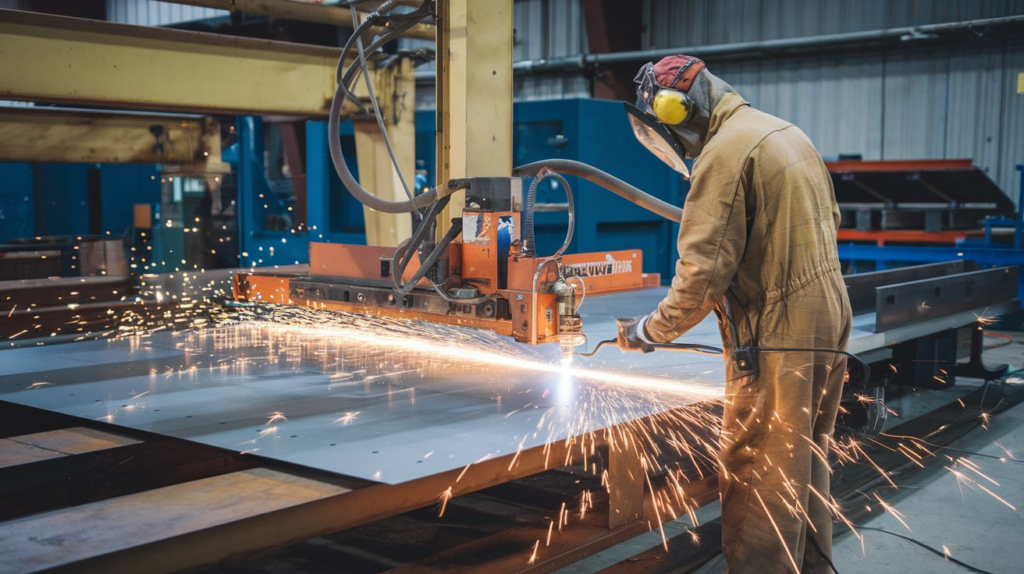Custom metal fabrication is a complex process that involves creating metal structures and components tailored to specific requirements. This practice is crucial in various industries, including construction, automotive, aerospace, and manufacturing. Understanding the metal fabrication process can help businesses and individuals make informed decisions when seeking the services of custom metal fabricators. In this article, we will explore the stages involved in custom metal fabrication, focusing on the techniques, materials, and best practices to ensure high-quality outcomes in 2024.
Metal Fabrication Process
The metal fabrication process consists of several key stages: design, cutting, bending, welding, and finishing. Each stage plays a vital role in ensuring that the final product meets the desired specifications and quality standards.
Design and Prototyping
The initial step in the custom metal fabrication process is the design phase. This stage involves creating detailed drawings and specifications for the product. Engineers and designers often use computer-aided design (CAD) software to visualize the final product and ensure it meets the necessary requirements. Prototyping may also take place during this stage, allowing custom metal fabricators to test the design for functionality and performance before moving on to production.
Cutting
Once the design is finalized, the next step is cutting the metal into the required shapes and sizes. Various cutting methods can be employed, depending on the material and thickness, including laser cutting, plasma cutting, and water jet cutting. Each technique has its advantages and is selected based on the specific needs of the project. Precision in cutting is critical, as it directly affects the overall quality of the final product.
Bending
After the metal has been cut, it is time for bending. This stage involves shaping the metal into the desired form using specialized equipment such as press brakes or folding machines. The bending process requires careful calculations to ensure that the metal maintains its integrity and does not crack or deform during shaping. Custom metal fabricators must consider the material’s properties and the intended use of the product when determining the bending angle and method.
Welding and Assembly
Welding is a crucial stage in the custom metal fabrication process, where individual pieces are joined together to form a complete structure. Various welding techniques, such as MIG (metal inert gas), TIG (tungsten inert gas), and stick welding, can be used based on the materials involved and the desired strength of the weld. Proper welding techniques are essential to ensure strong, durable joints that will withstand the demands of the finished product.
In some cases, additional assembly processes may be required, such as attaching other components or integrating additional systems. Custom metal fabricators must ensure that all parts fit together accurately and function as intended.
Finishing
The finishing stage involves preparing the metal product for its final use. This can include processes such as sanding, grinding, painting, or powder coating. Finishing not only enhances the aesthetic appeal of the product but also protects it from corrosion and wear. Depending on the project’s requirements, custom metal fabricators may offer a range of finishing options to meet the specific needs of their clients.
Quality Control in Custom Metal Fabrication
Quality control is an integral part of the metal fabrication process. Custom metal fabricators must implement stringent quality assurance measures to ensure that each product meets industry standards and client specifications. This can involve inspections at various stages of the fabrication process, including:
- Checking the accuracy of cuts and dimensions
- Assessing the quality of welds
- Evaluating the final finish for defects
By maintaining high-quality standards throughout the metal fabrication process, custom metal fabricators can ensure that their products are reliable, durable, and fit for purpose.
The Role of Technology in Metal Fabrication
Advancements in technology are significantly impacting the custom metal fabrication process. In 2024, we can expect to see increased integration of automation, robotics, and smart manufacturing techniques. These innovations are designed to improve efficiency, reduce labor costs, and enhance precision in metal fabrication.
For example, automated cutting machines can significantly speed up the cutting process while maintaining accuracy. Additionally, the use of data analytics can help fabricators identify trends and optimize their operations, leading to improved product quality and customer satisfaction.
Benefits of Custom Metal Fabrication
Choosing custom metal fabrication offers several advantages for businesses and individuals. One of the primary benefits is the ability to create tailored solutions that meet specific requirements. This flexibility allows for the production of unique components that may not be available through off-the-shelf options.
Furthermore, custom metal fabrication enables businesses to maintain control over the entire production process, ensuring that quality standards are upheld at every stage. This level of control can lead to increased efficiency and reduced waste, ultimately resulting in cost savings.
Industry Applications of Custom Metal Fabrication
Custom metal fabrication serves various industries, each with its unique demands and requirements. Some of the most common applications include:
- Construction: Custom metal fabricators produce structural components such as beams, columns, and frames, providing essential support for buildings and infrastructure.
- Automotive: The automotive industry relies on custom metal fabrication for components like chassis, brackets, and exhaust systems, ensuring that vehicles meet safety and performance standards.
- Aerospace: In aerospace manufacturing, precision and weight are critical. Custom metal fabricators create parts for aircraft, spacecraft, and satellites, adhering to strict regulations and specifications.
- Manufacturing: Many manufacturing processes require custom metal components, including machinery parts, tools, and fixtures that improve operational efficiency.
Final Thoughts on Custom Metal Fabrication
The custom metal fabrication process is intricate and multifaceted, involving design, cutting, bending, welding, and finishing. Understanding each stage is crucial for anyone looking to engage with custom metal fabricators in 2024. By prioritizing quality control and embracing technological advancements, businesses can ensure that they receive high-quality, tailored solutions that meet their specific needs. The expertise of custom metal fabricators can play a significant role in creating products that are not only functional but also aesthetically pleasing and durable.



More Stories
Industrial Revolution 4.0 and the Dawn of Industry 5.0
Why Choose Dubai for Your Business? A Guide to Top Business Setup Consultants and Solutions Providers
Durable Custom wax Paper: Keeps Food Fresh